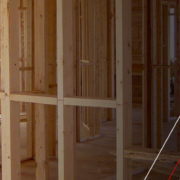The Environmental Impact Of Traditional Construction Methods
Traditional construction methods, while essential for building infrastructure and meeting housing demands, often have significant environmental impacts. These impacts arise from resource extraction, energy consumption, waste generation, and other factors associated with conventional building practices. Here are key environmental concerns related to traditional construction methods:
Resource Depletion:
- Timber and Deforestation: Traditional construction heavily relies on timber for framing and other structural elements. Unsustainable logging practices contribute to deforestation, leading to loss of biodiversity, disruption of ecosystems, and increased greenhouse gas emissions.
- Mineral Extraction: The extraction of raw materials such as sand, gravel, and other minerals for concrete production can result in habitat destruction, soil erosion, and depletion of natural resources.
Energy Consumption:
- High Embodied Energy: The manufacturing and transportation of construction materials, especially those like steel and concrete, require significant energy inputs. This embodied energy contributes to the overall carbon footprint of a building.
- Energy-Intensive Production: Traditional manufacturing processes for materials like cement involve high-temperature kilns, contributing to substantial greenhouse gas emissions.
Waste Generation:
- Construction and Demolition Waste: Traditional construction often generates large amounts of waste during both the construction and demolition phases. This waste includes excess materials, packaging, and demolition debris, which can end up in landfills, contributing to environmental pollution.
- Single-Use Materials: Many traditional construction materials are designed for single-use, contributing to a linear, rather than circular, economy.
Carbon Emissions:
- Greenhouse Gas Emissions: The production of cement, a key ingredient in concrete, is a major source of carbon dioxide emissions. Additionally, transportation of materials and machinery to construction sites adds to the carbon footprint of traditional construction.
- Operational Energy: Buildings constructed using traditional methods may lack energy-efficient features, leading to increased energy consumption for heating, cooling, and lighting over their lifespan.
Water Consumption:
- Concrete Production: The production of concrete involves significant water usage, and the extraction of aggregates can impact local water sources. Water scarcity in certain regions exacerbates the environmental impact of traditional construction methods.
Land Use and Habitat Disruption:
- Urbanisation and Expansion: Traditional construction often involves expanding into natural habitats, leading to loss of biodiversity, disruption of ecosystems, and fragmentation of landscapes.
- Impervious Surfaces: The creation of impervious surfaces, such as roads and pavements associated with traditional construction, can contribute to increased runoff, soil erosion, and changes in local hydrology.
Air and Noise Pollution:
- Construction Activities: The construction phase itself generates air and noise pollution through heavy machinery, construction vehicles, and other equipment.
Acknowledging these environmental impacts is crucial for the construction industry to transition towards more sustainable practices. Adopting eco-friendly materials, embracing energy-efficient technologies, and incorporating sustainable design principles are essential steps in mitigating the environmental consequences of traditional construction methods.
If you would like to discuss your projects environmental impact please contact us to arrange a consultation with one of our experts.











